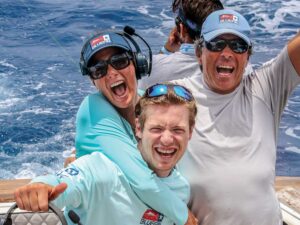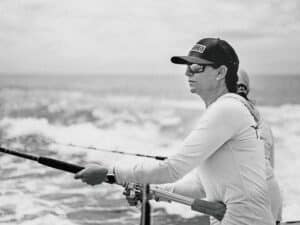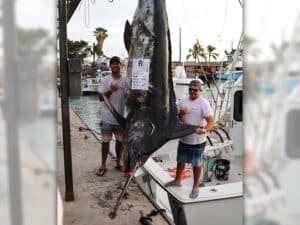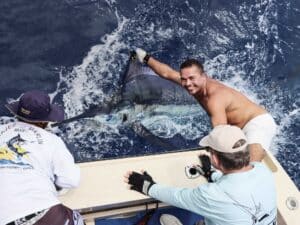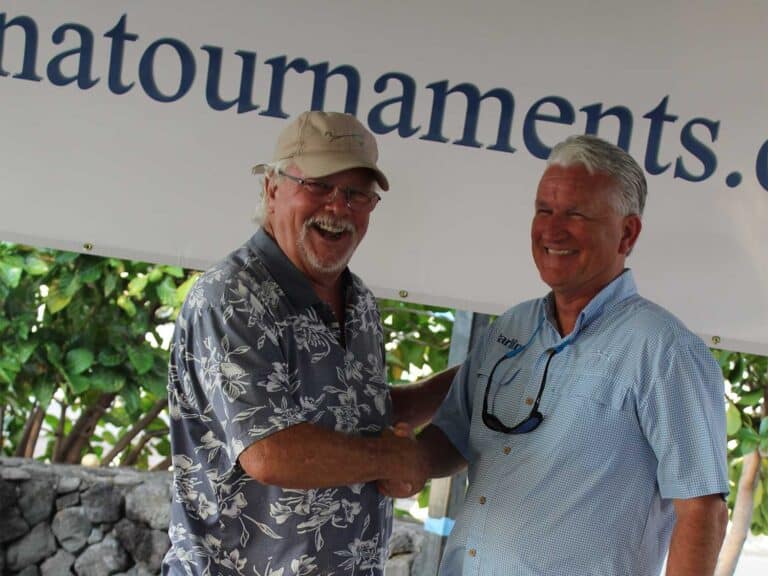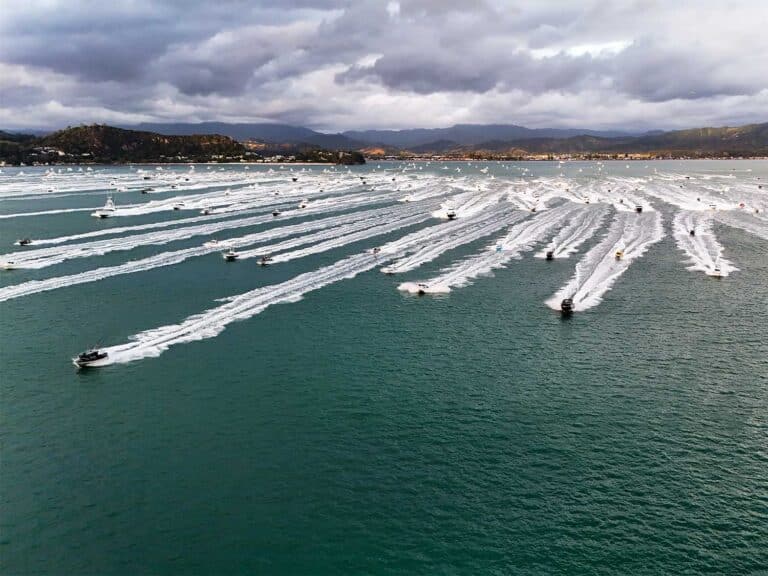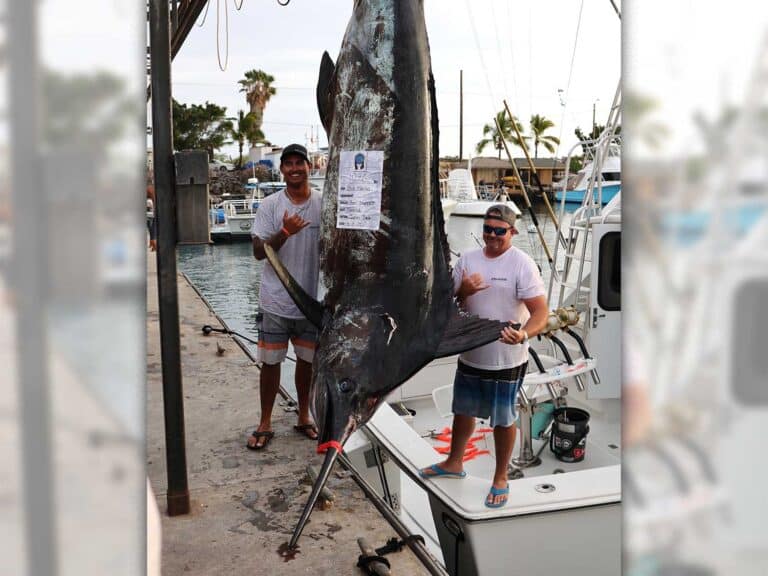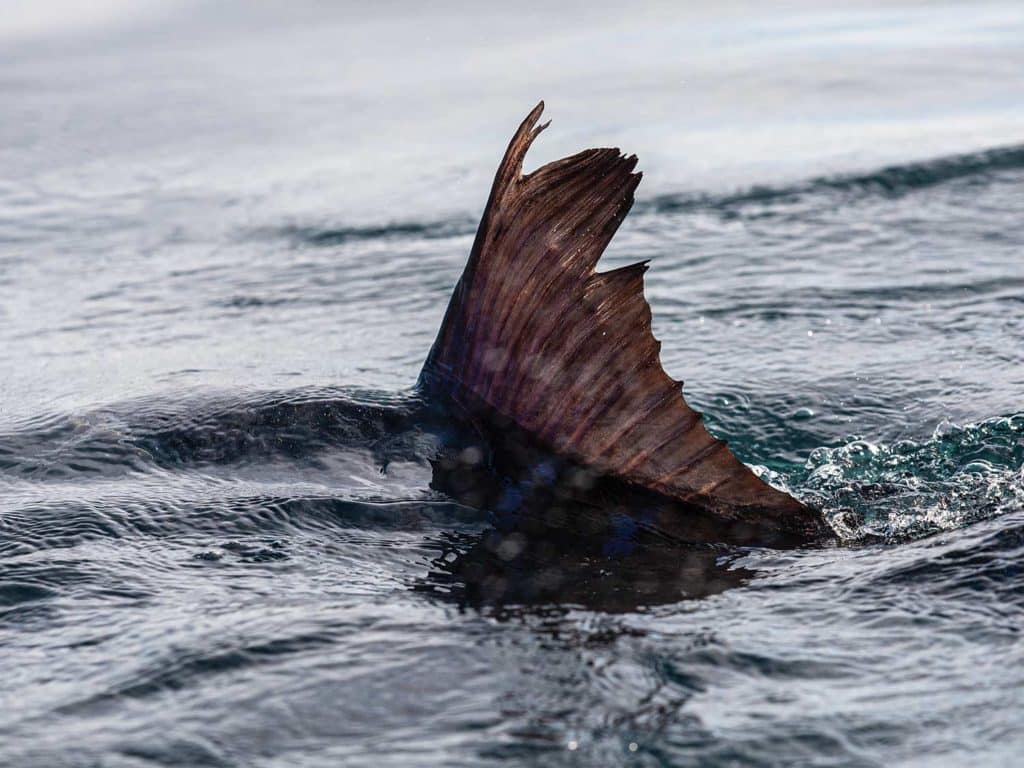
An accidental entrepreneur who parlayed an ordinary fuel-dock business in California into what would eventually become the largest independently run big-game fishing tournament in the world, Robert (Bob) Bisbee’s remarkable journey began on March 6, 1933, and spanned 85 years.
Bisbee migrated from Excelsior Springs, Missouri, to Orange County, California, where he married Aina Williams on November 1, 1960—a marriage that lasted 58 years—and had five children: Bob Jr., Wayne, Tricia, Erik and Destiney. He was also blessed with many grandchildren and great-grandchildren before his death on June 14, 2018.
Along the way, the elder Bisbee touched the lives of millions through his passion for sport fishing. In 1975, he leased the Shell Fuel Dock on Balboa Island, California, and rebranded it as a 76 Union facility known as Bisbee’s Marine Fuels. He also opened a modest tackle store, which became Bisbee’s Sportfishing Headquarters.
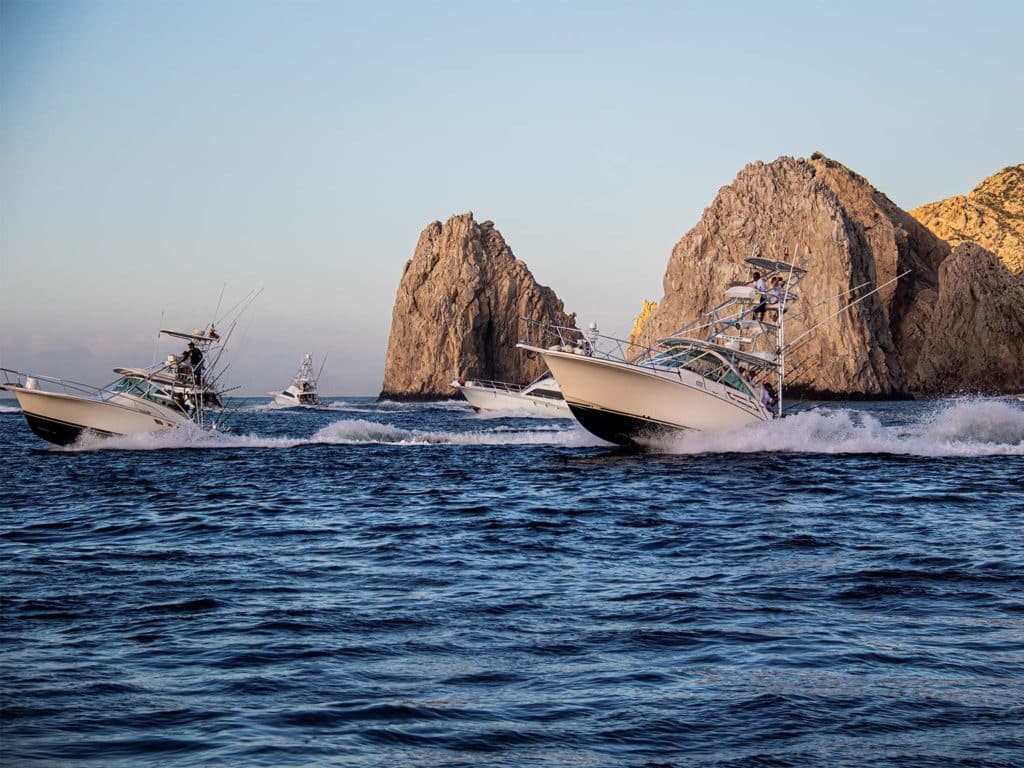
A Radio Lifeline
The tackle store was the first to set up a land-based marine single-sideband radio to keep in touch with boats traveling up and down the West Coast. At the time, this was often the only way for the crews to communicate, by relaying messages to and from their families, boat owners and others. Boats that broke down along the Baja Peninsula could request everything from hardware and engine parts to tackle. This radio communication was vital to the offshore fishing community’s expansion south into Cabo San Lucas, Mexico; supplying the boats heading to Cabo and relaying messages became a huge part of the Bisbee business.
During summer 1981, former US Air Force pilot Luis Coppola, owner of the Hotel Finisterra in Cabo, and Bill Baffert, his nephew and hotel manager, met with Bisbee at his fuel dock in California. Baffert’s first child had been born that year, and with his family living in Mexico, transporting goods (diapers!) from the United States to southern Mexico was nearly impossible. They had dozens of boxes that needed shipping.
Enter Bisbee and his sport-fishing customers. The cooperative cadre of boat captains who used Bisbee’s radio service to relay messages to their families in the tackle shop—the last stop for boats traveling to and from Cabo San Lucas—were happy to deliver diapers and other supplies south in exchange for a hot meal and a few cold cervezas upon arrival.
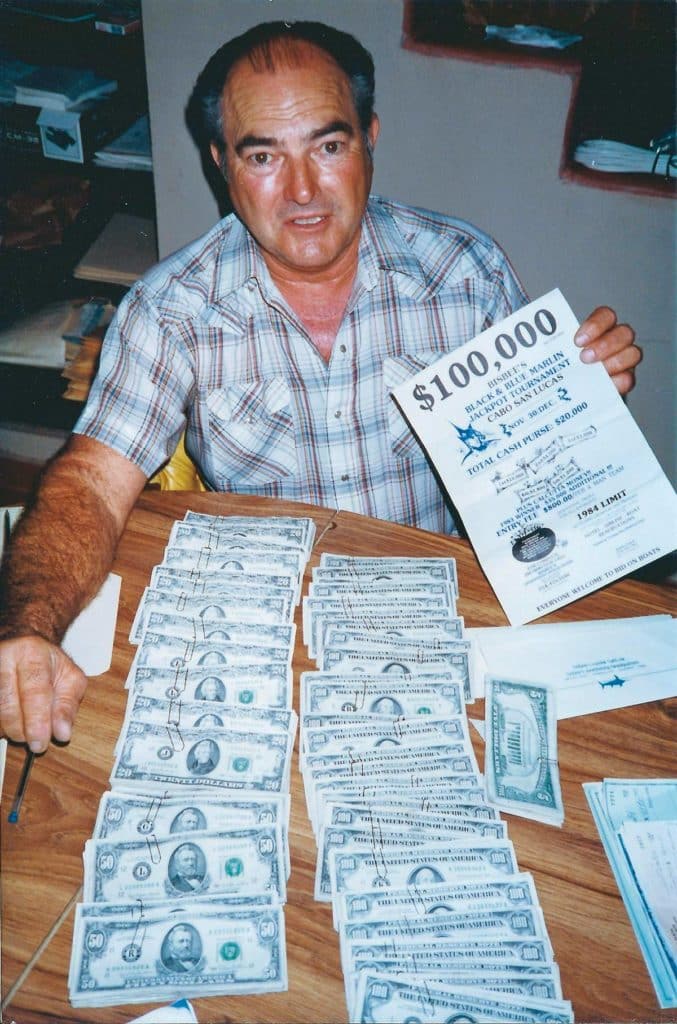
Growing Cabo
At the time, Cabo San Lucas was a simple fishing village, with seven small resort hotels catering mostly to visiting anglers. Each of the hotels hosted a yearly tournament, except for the Hotel Finisterra. Bisbee and Baffert became friends, and started kicking around an idea for a marlin tournament, with the hotel’s owners and Bisbee as partners. The Finisterra would co-host and pay for the swag—a small bag with the hotel-logo patch—plus a few fishing items, along with rods and reels for the top three winners. And just like that, they had the makings of a tournament.
John Doughty—the owner of J.D.’s Big Game Tackle Store, a then-employee of Bisbee’s—drew up the initial set of tournament rules, and the Bisbee’s Black and Blue was born.
Bisbee was intrigued. His boat was already in Cabo San Lucas with son Bob Jr. on as captain; the younger Bisbee quickly recruited additional boats to participate in a loosely run tournament scheduled for May 1982. The concept for the tournament was to help promote the fuel dock and tackle store back on Balboa Island in California. The first tournament had a whopping six boats. Unfazed, the event received tremendous support from Bob’s buddies, who would later start the Marlin Club in Cabo. Bill Doner, who ended up purchasing and refurbishing Finisterra’s Tortuga Fishing Fleet, also gave Bisbee his support, and the modest event went off without a hitch. Jack Williamson, fishing aboard Bob’s own boat, won the $10,000 purse. “My team won the first tournament,” Bob said, “so I won my money back.”
“Fishing was off the charts,” he continued. “Billfish were stacked up with their tails sticking out of the water, looking like a picket fence a few miles in front of the arch at Land’s End.” The news of the great fishing spread rapidly and, to satisfy the demand, Bisbee scheduled another event. And by the time December rolled around, the number of teams had more than doubled to 13.
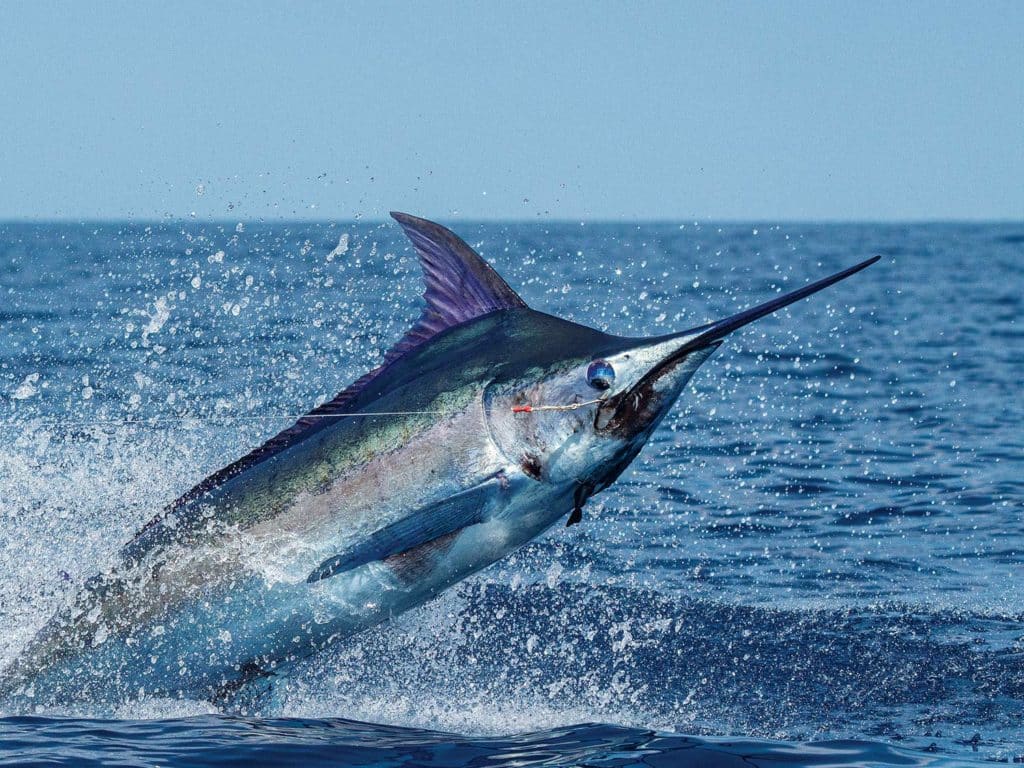
Over the years, the dates were gradually moved back to late October to conform to Cabo’s seasonal weather. Like the tail wagging the dog, the tournament that was first spawned to raise extra revenue for Bisbee’s original business and to promote the Hotel Finisterra and its Tortuga Fleet slowly morphed into a full-fledged Bisbee family affair. As the diversity and number of teams from around the world increased, the jackpot format—oriented toward a betting structure and ever-increasing cash prizes—attracted more participation.
The Bisbee family’s tournament became a significant contributor to the development of Cabo San Lucas, and as the destination began to transform from a remote, undeveloped getaway for Southern California boat owners, it became one of the most talked-about worldwide fishing events and destinations.
In 1990, the Plaza Las Glorias became tournament headquarters, and the recently hired general manager of the hotel, Clicerio Mercado, coordinated the logistics with Bob Bisbee until 1993. By then, Mercado was the local face of the Bisbee’s tournaments, handling most of the day-to-day challenges. He is no stranger to community service, having worked six years as vice president in charge of construction. An active Rotarian, Mercado still works with many charities, including Smiles International Foundation, Reel Life Adventures, the Stars and Stripes Charity Tournament, and Miracle Foundation, as well as other government-sponsored community fishing tournaments.
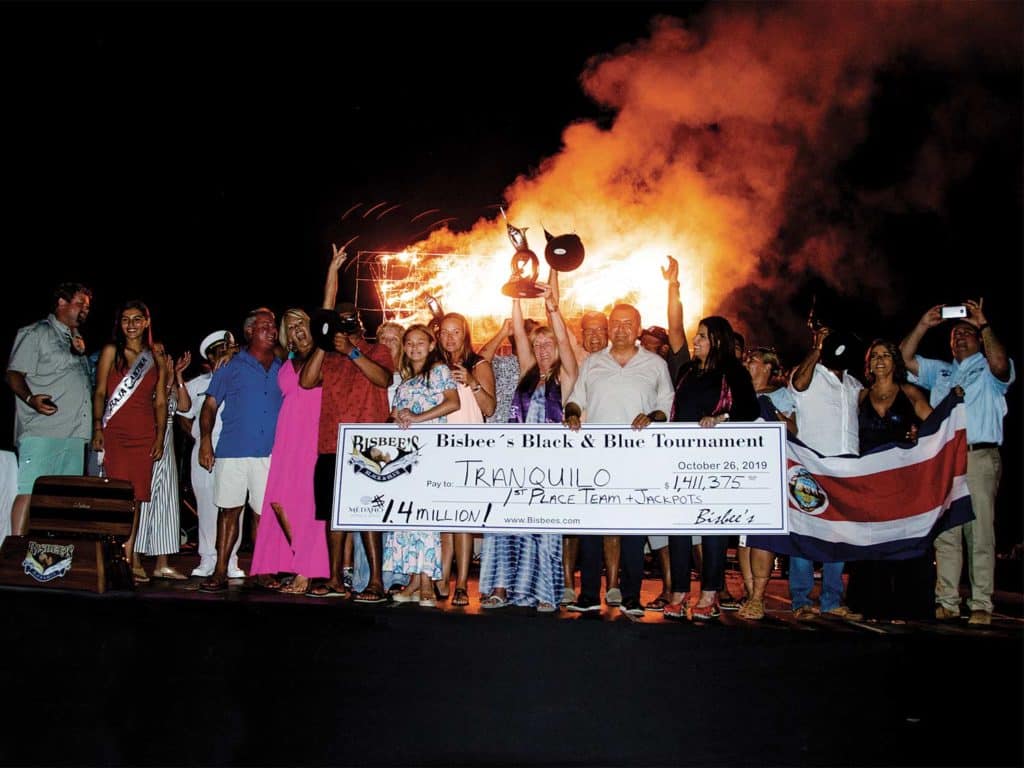
Wayne’s Game
In 1995, Bisbee turned over day-to-day tournament operations to his son Wayne. “It got too big for me, and everything switched to computers,” Bob Sr. lamented. “Tricia and Wayne do a wonderful job securing sponsors. I never had sponsors and didn’t advertise in any magazines. Originally, all the prize money came from the tournament entry fees.”
Wayne also cherished the value of family, and within two years, had recruited his sister Tricia for the position of vice president and director of sponsorships. She went from part time to full time in 1997. This allowed them to expand their tournament footprint with a second event, using a modified format that included marlin, dorado and tuna. This became known as the Bisbee’s East Cape Offshore Tournament, and the 20th annual event was hosted by the Hotel Buena Vista Beach Resort in 2019.
The popularity of the low-key, multispecies East Cape event compelled the brother-and-sister team to introduce the Bisbee Los Cabos Offshore Tournament in 2002, to be held just prior to the start of the Black and Blue tournament.
Watch: Check out this sailfish swimming in a residential canal in Naples, Florida.
The three events in the two venues prospered, capitalizing on the injection of energy and enthusiasm brought by the growing Bisbee group, which expanded the events by networking and cross-promoting tournaments with other successful tournament directors.
“The results have been very productive, resulting in teams participating from around the world,” Wayne says. Three generations of Bisbees continue their involvement today. Wayne’s cousin Carey Bisbee came on board in 2002 as event quartermaster when he was invited by Wayne and Tricia for a vacation, and ended up with the responsibility of handling all of the logistics, ensuring that all items required for an undertaking of this magnitude are in place and on time. Carey also keeps an eye on the younger generation while they are in Cabo San Lucas.
Wayne’s son, Blake, and daughter, Jordyn, along with Tricia’s children, Paige and Jamie, pitch in at the different tournaments, working wherever they are needed. Staff members Jack Teschel and Burt Merritt from Pensacola, Florida, handle the weigh station, and David Garcia of CatchStat takes care of the scoring. Rich Christensen, videographer and owner of RK Creative Pro, has documented and produced shows for the tournaments for more than 18 years; brothers Axel and Felipe Valdez, owners of Hotel Buenavista Beach Resort, and Jill Christensen handle the official tournament radio and manage a small army of volunteers.
“Bisbee’s Black and Blue tournament payouts will exceed $100 million by the 40th anniversary,” Wayne marvels. “So far, we’ve had 16 checks over $1 million, five over $2 million, and two over $3 million.”
“The Bisbee’s Black and Blue tournament payouts will exceed $100 million by the 40th anniversary. So far, we’ve had 16 checks over $1 million, five over $2 million, and two over $3 million.”
Wayne Bisbee
The Records Speak for Themselves
When the tournament officially began in 1981, the $10,000 prize seemed meager by today’s standards. However, as participation grew, the cash prizes became simply astonishing. Twenty-two years later, in 2003, the first seven-figure check of $1,165,230 was awarded to the team fishing aboard Que Sera for a 656-pound blue marlin landed by Brady Bunte. They were one of 148 teams registered that year.
In 2006, the largest single payout in sport-fishing history was awarded to Anthony Hsieh’s Bad Company. Southern California-based captains Steve Lassley and Pete Groesbeck, along with James Kingsmill, Keith O’Brien-Morton and Andy Horner, were all part of the six-angler crew who earned a record tournament payday of $3,902,997. The overall payout that year—$4,165,960—was also the largest total purse in tournament history anywhere in the world.
Nine years later, in 2015, Ken Cofer’s Tranquilo team received a check for $2,511,462, and the records continued to fall. In 2018, Chinito Bonito rewrote event history, taking home the second-highest payout of $3,004,900.
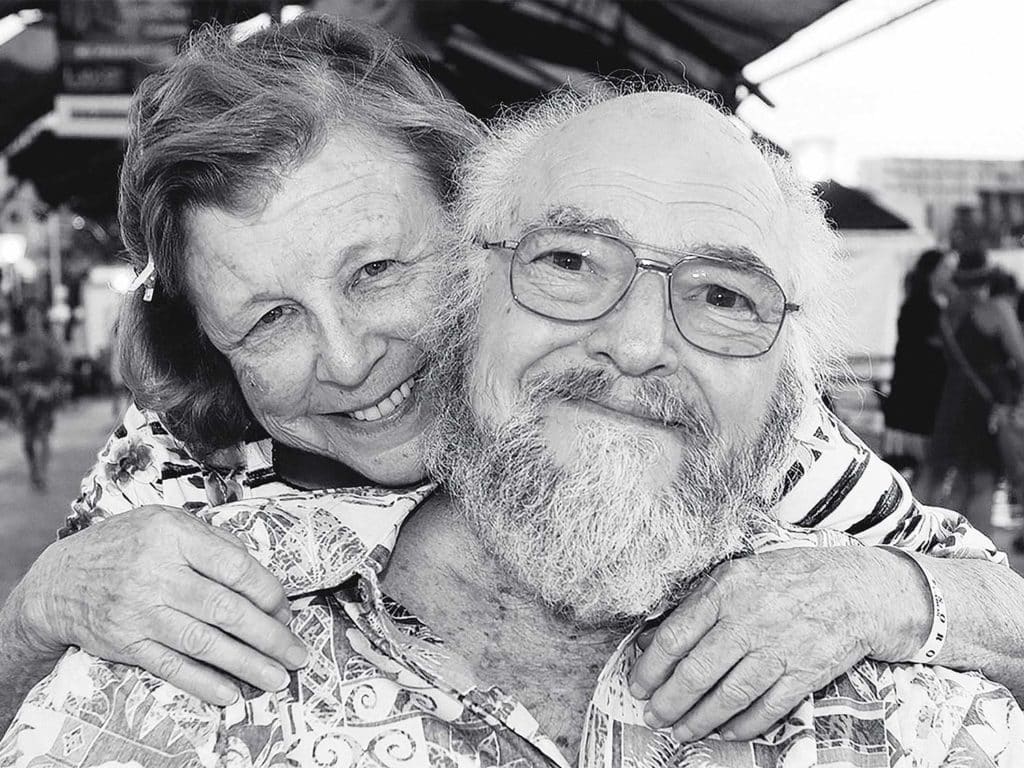
Gone but Not Forgotten
Bisbee’s family and staff has watched the Black and Blue evolve from just a small marlin tournament into what Sports Illustrated once hailed as the Super Bowl of fishing.
On Monday, October 22, 2019, Bob’s wife, Aina, their children, and the extended Bisbee family and staff, as well as several hundred friends, observed Bisbee’s final wishes with a celebration of his life at the Baja Cantina in Cabo San Lucas, which concluded with Marco Ehrenberg proposing a round of applause to honor Bob. The applause thundered and echoed throughout the marina complex for several minutes. Then, Aina and Bob Jr. joined the rest of the family aboard the Bisbee tournament boat to scatter the patriarch’s ashes into his beloved Sea of Cortez in the shadow of the arch at Land’s End. A fleet of boats ranging in size from 20 to more than 80 feet followed to say their final goodbyes as the ashes of this highly regarded man were lovingly cast into the sea.
“This event means quite a lot—not just to me, but to anglers everywhere,” Wayne Bisbee explained before the 2019 tournament. “If you think about it, these days most things don’t last for this long. Especially something that started with six boats and a bunch of guys from Southern California coming down to Cabo to have fun catching marlin for a week.”
“If you think about it, these days most things don’t last for this long. Especially something that started with six boats and a bunch of guys from Southern California coming down to Cabo to have fun catching marlin for a week.”
Wayne Bisbee
The Bisbee family shares a sense of humility that is wrapped in shock and awe at the magnitude of the legacy that Bob Bisbee Sr. left behind. They refuse to rest on his laurels, or to let past failures dampen their enthusiasm. Fine-tuning the program is a constant for the Bisbees, who realize all shortcomings can result in huge successes with the right mindset. They’ve proved it.
Wayne, Tricia and Carey Bisbee, along with Clicerio Mercado, have carved out their niches while allowing other family members and staff to follow suit. All have gravitated to the part of the extravaganza in which they excel, while allowing others to find their own unique places.
Read Next: Corporate boat ownership can be a viable option in the right circumstances. Learn more here.
Looking to the future, the entire team is following in Bob Sr.’s footsteps. Their legacy has united them in a goal that they are passing down to the next generation, adding fun and pizazz to each tournament edition. The results are a mega-business that continues to exceed everyone’s expectations. Bob Bisbee would be proud.
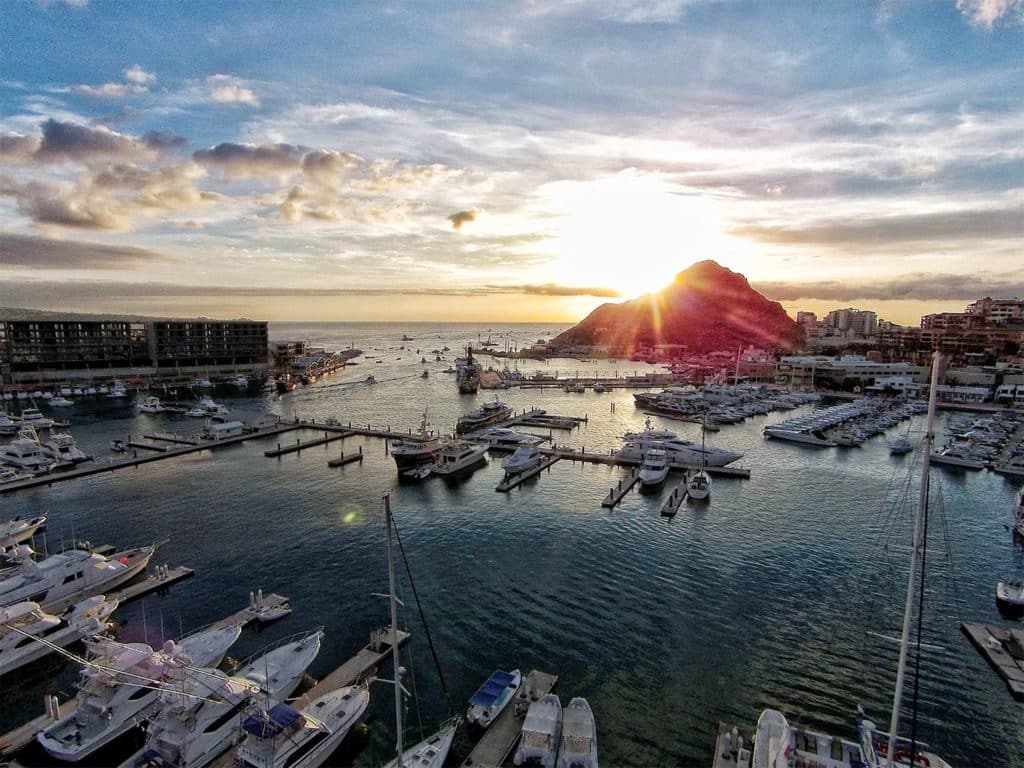
Giving Back
When Bob Bisbee Sr. turned over the management of the Bisbee tournaments to his son Wayne 24 years ago, he was confident that his son’s management style and values reflected his own. In addition to involving the family in the day-to-day operation, he was certain Wayne would also understand the need to give back to the people and the community of Cabo San Lucas, Mexico.
In 2011, Wayne led the effort to establish the Bisbee’s Wildlife and Conservation Fund. In the years that followed, this fund has supported several projects in Baja and beyond. In 2014, Hurricane Odile—the most powerful hurricane to strike the Baja California peninsula—slammed into the luxury resorts of Los Cabos, smashing windows, flooding roads and partially collapsing hotels, injuring hundreds. The Bisbee family went to work, beginning with a hurricane relief fund of $250,000. They worked with crisis-assessment teams, set up distribution centers, and secured housing for displaced families. The fund also provided cash to independently owned charter operations for repairs and rebuilding, keeping people working, and ensuring that the sport-fishing industry continued uninterrupted. To reinforce the concept that the region’s tourism was back online after the storm and to encourage more teams to participate that year, the Bisbee’s tournaments offered free entry to any team fishing aboard an approved Cabo-based charter boat.
Another project partners with the Green Scholarship Program and La Paz University, awarding four-year marine biology scholarships to select students who are underprivileged yet have excelled in their studies and who demonstrate a passion for higher education. Their focus is on sustainability, and they work closely with The Billfish Foundation to promote catch-and-release angling and marlin-tagging projects to learn more about billfish migration.
Beginning in 2015, Tricia Bisbee started working with Hope for Los Cabos, a charity operated by Jen and David Limpert and their extended family. They arrange for all the fish that are brought to the scale during the Bisbee tournaments each year be given to the Limpert’s Fishing for Food program. The ongoing project has yielded 135,000 meals since its inception.
